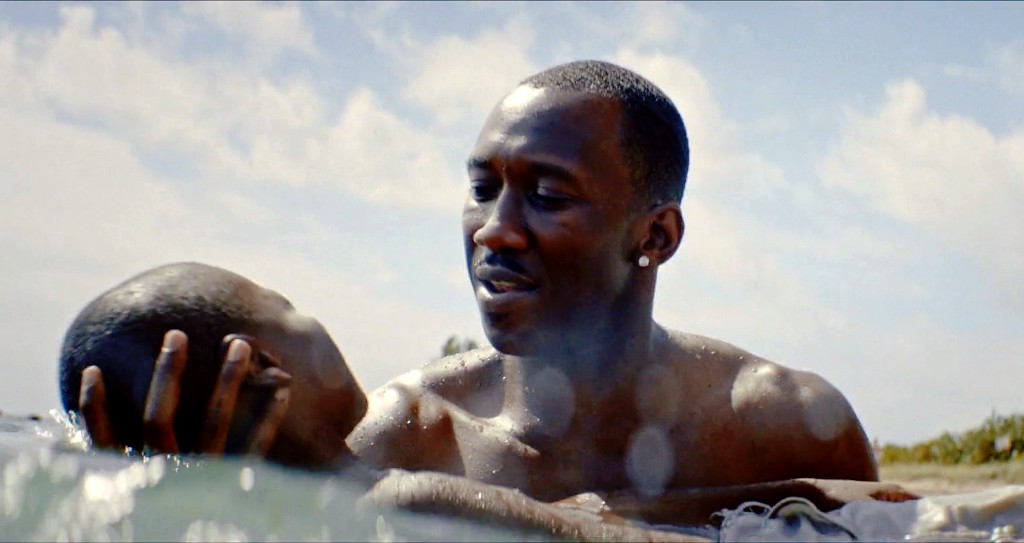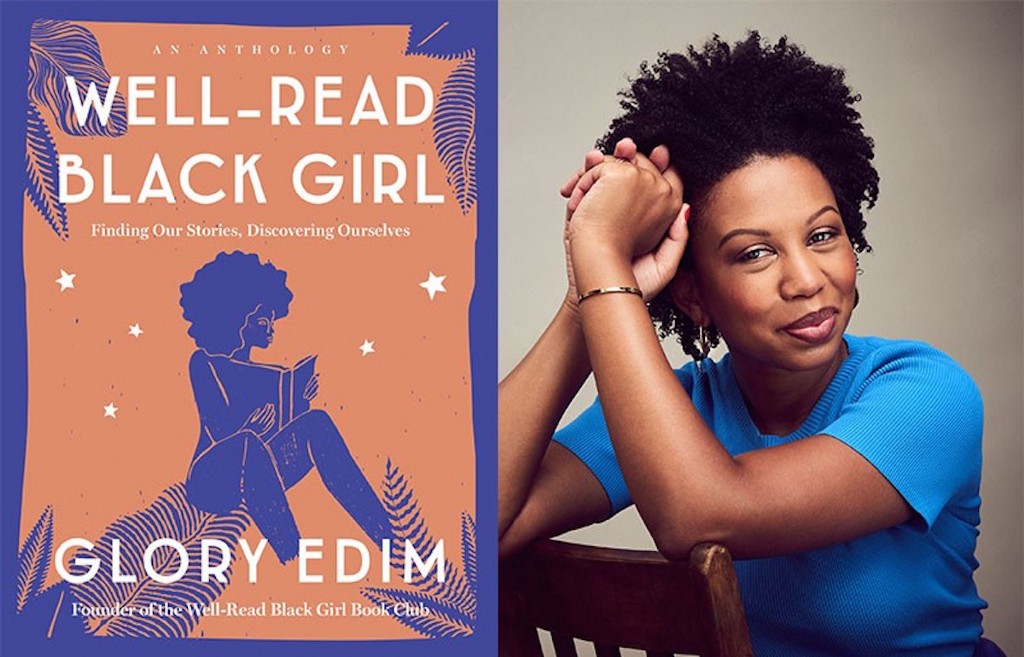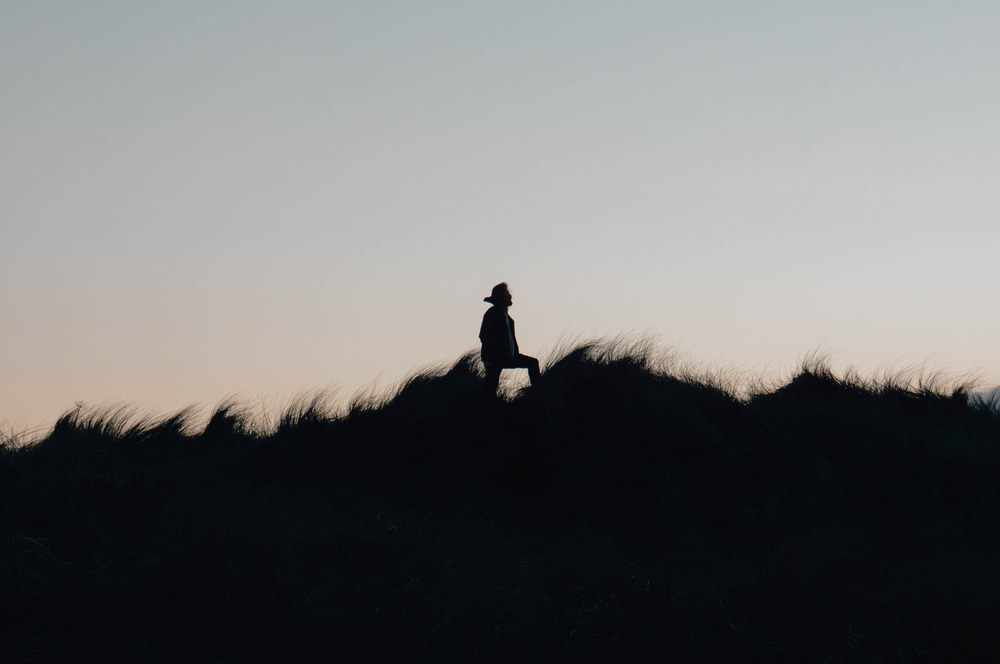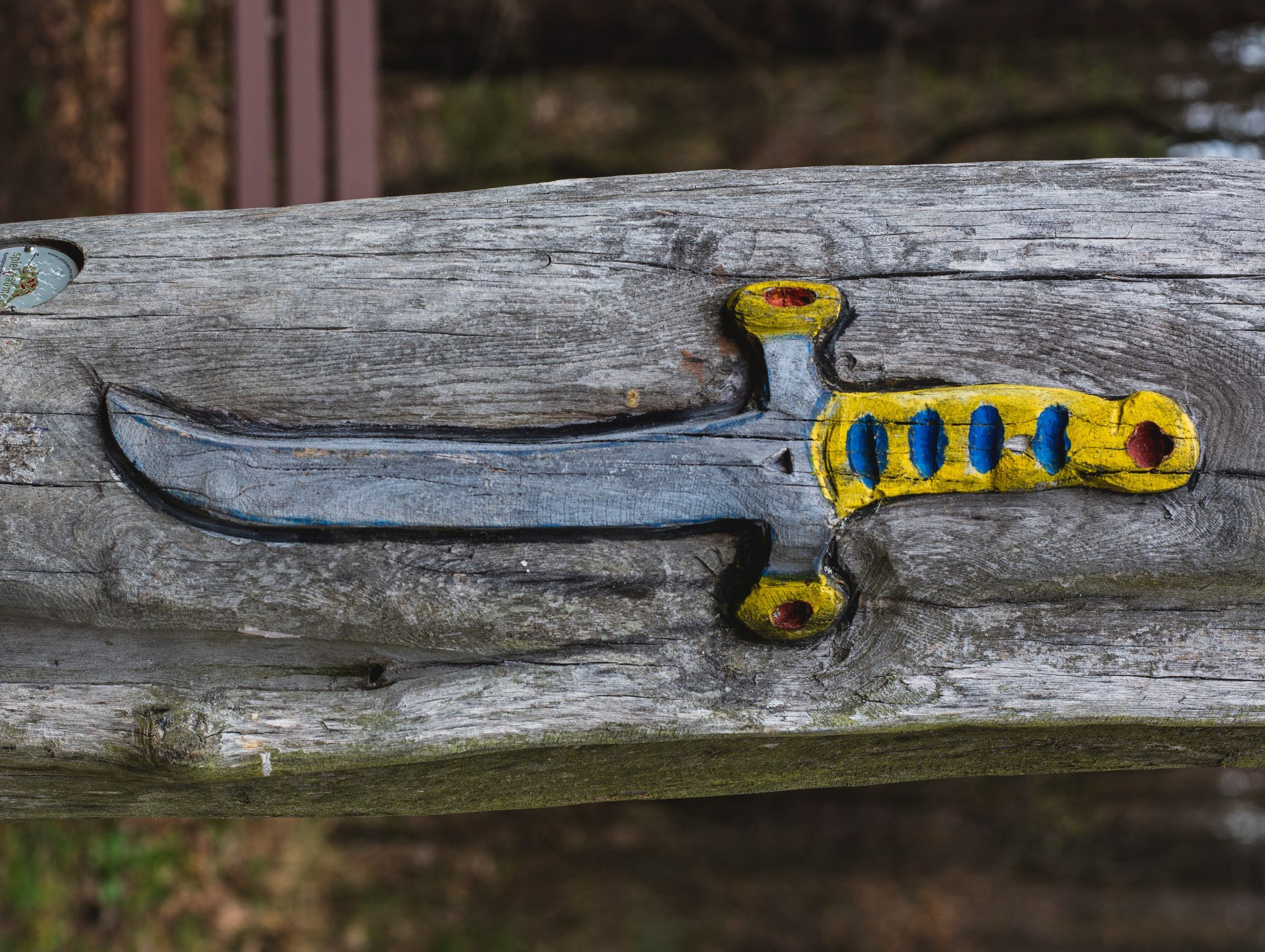essays
Who Loved Gay Black Boys Before Moonlight?
The meaning of a film that depicts sensitive gay black men, and the long history of misrepresentation it remedies

The 2016 film Moonlight is about Chiron — a black boy gradually becoming a man in America’s ghettos — coming to terms with his sexuality in three chapters. Even two years after its release, there is a scene in it that still reaches me. Young Chiron is dealing with the homophobic bullying of his peers, a mother battling drug addiction, and uncertainty about his sexuality, when Juan, a neighborhood drug dealer, decides to become his mentor. During an outing to the beach Juan recalls a woman in Cuba giving him the nickname, Blue. Chiron then asks Juan if Blue is his truer name.
Juan responds, “At some point, you gotta decide for yourself who you gone be. Can’t let nobody make that decision for you.”
When I saw Moonlight as a gay, black man at the age of 22, I was shaken to realize that this was the first moment in cinema I had seen a black man reassuring a potentially gay, black male that his existence was not only valid, but also worth taking pride in.
With every viewing since then, I see both the glaring differences and similarities between my journey and Chiron’s. As a child, I was considered gifted because of my love for books and conditioned to think that obedience equaled safety in America. Everything that I’d been told about my future as a “good black kid” shattered when I was 15 years old, and came out to my mother; months later my older brother would come out as well. When my mother received the news I watched her cry on the basement floor, begging for God to change us. Ultimately my brother and I not only struggled with the homophobia that was embedded in Jamaican culture, and with the larger culture’s media that failed to empathetically portray our realities — we also struggled simply to love and support each other.
This was the first moment in cinema I had seen a black man reassuring a potentially gay, black male that his existence was worth taking pride in.
For years we retreated away from one another. I once called him during a break in my freshman year of university, to ask him to pick me up from our home, because I’d gotten into an argument with our mother about my sexuality. He arrived and told me, “You just need to grow up and deal with this.” As time passed, our distance widened. I moved across country, went to riots during movements like Nuit Debout in Paris, and wrangled with my queerness at every turn. Even in my writing, I realized that while many of the characters in my stories were queer, they were also white. For a long period of time I stopped writing, and tried to understand why I had erased myself in my own work.
When I think of the time lost between my brother and I, of the emotional mayhem we failed to confide in each other about, a scene in Moonlight provides me with an explanation. It is near the film’s end, when an adult Chiron meets with Kevin, his estranged high school crush. Kevin is surprised by the formerly sensitive Chiron’s new hardened, tough demeanor, and asks, “Who is you, Chiron?”
As viewers we understand that Chiron is no less sensitive, but that he’s built himself “strong” to stop others from getting close or from attempting to hurt him. It is in moments of representation like this that I find myself asking: how much less painful would coming out have been for bodies like mine, my brother’s, and Chiron’s, if we had only seen people like us represented consciously in the mainstream? Who could we have loved if we had been brave enough, if we had been shown and reassured? How much more accepting might our families, neighborhoods, or schools have been?
It is the idea of life’s most necessary experiences — of love, affection, closeness — being indefinitely delayed or completely restricted that haunts Chiron in Moonlight. As a child he struggles to even speak to peers or adults because he is so used to being judged; his teenage years are filled with isolation. The adult Chiron is a far cry from his child and teenage selves, but not in any liberated way. We see this when he teaches one of his young drug dealers a lesson in masculinity, by bullying and mocking him. “You can’t survive if you don’t know when these niggas fucking with you,” he says.
It is once Chiron confronts his mother’s abandonment near the film’s end that he is slowly able to allow his performative mask of masculinity to drop. His mother’s love, which was previously withheld, now — finally — validates him as a person worthy of both affection and intimacy. It’s why Chiron finds the courage to seek out Kevin, and eventually answer Kevin’s question — “Who is you?” — honestly. He admits that he has not been touched intimately by another person since Kevin himself, in their teen years. Chiron and Kevin embracing is one of the film’s last images, and it marks the end of Chiron’s long wait to live.
In my own life, I have wandered through the isolation and the waiting-for-life-to-begin that many gay, black men experience. During high school dances I looked on at the straight couples and their freedom with a feeling of longing. There were no first kisses under the bleachers, no dates or bringing boys back home to meet my parents. In my first year of university I ached so badly to be kissed that I made out with a boy whose father I discovered was a member of the Aryan Brotherhood. I lost my virginity at the age of 22, after a drunken night in the Philippines, and afterward breathed a sigh of relief that I was desirable enough to be wanted.
During high school dances I looked on at the straight couples and their freedom with a feeling of longing.
“Subconsciously, at a certain point, I think we all are not aware that people of color have the same capacity for a full human experience as white people,”said Mahershala Ali, the actor who plays the mentor of young Chiron, in an interview. “That’s what makes this movie so special, because of how these characters are framed so three-dimensionally, how emotionally intelligent [they] are.”
Chiron was fatherless. I myself lost two father figures: my biological father to murder, and my stepfather to the U.S. prison system, and then deportation. I learned to verbally spar with peers, and sometimes adults, who thought my shy nature warranted homophobic remarks. I remember how the moment when teenage Chiron breaks down crying as he says, “You don’t even know,” after a guidance counselor downplays his bullying, buried me under water and made it hard for me to breathe.
The film shows its emotional intelligence even more so in the scene when Chiron’s mother awakens as he returns home, to find him looking at her critically. She laments, “You don’t love me no more. You’re my only, and I’m your only.” As a child, my own mother’s distant demeanor would lift when I earned good grades or if she felt sentimental enough to say, “Prince, you’re the child that taught me to be affectionate.” Just as Chiron’s uniqueness made him difficult for his mother to understand or to love deeply, my sexuality made it difficult for my mother to understand me. It was impossible for me to be both her good child and her gay child.
Chiron’s mother’s words are electrifying because they express the stifled desire and entrapment that Chiron and many others like him feel — the claustrophobia in their lives, families, communities, and from the demands of the larger patriarchal, anti-black world, which urges black men to be both bulletproof and unfazed by trauma.
The road to meaningful three-dimensional representation for gay black men in the media has been nothing short of tumultuous. During the Harlem Renaissance, a revered period of black creativity, key figures like Claude McKay, Langston Hughes, and Wallace Thurman had to step carefully in writing about their attraction to other men. Homosexuality, from a psychological standpoint, was considered a “sexual orientation disturbance” until 1987. Those that were openly gay could be subject to forced conversion therapy, which even included electroshock therapy or replacing the testicles of a homosexual man with that of a heterosexual man. Gay black artists of the 1920s and on were justifiably afraid of publicly outing themselves, because of how easily their skin color and their sexuality could be criminalized.
Claude McKay, a Jamaican writer born in 1889, would go on to publish poems in The Liberator, a monthly socialist magazine. Most critics of McKay were careful to isolate his radical politics from his rumored relationships with men such as Walter Jekyll, in an attempt to sterilize his work from anything that might be taboo. Sections of both McKay’s and Jekyll’s works allude to a knowingness of queer life and a possible attraction to one another, as in the queer friends Jake and Ray in McKay’s novel Home to Harlem, or Jekyll’s 1907 study which compared the beauty of patwa, Jamaican Creole, to the “vocal ejaculations between [Jamaican men].” McKay’s literary achievements were not enough to shield him from homophobic reactions to his work. His poems published in an issue of Crisis came alongside a scathing review from W.E.B. Du Bois, in which the critic described feeling “like taking a bath” after reading the more homoerotic sections of Home to Harlem.
Homosexuality, from a psychological standpoint, was considered a ‘sexual orientation disturbance’ until 1987.
McKay’s work would inevitably influence many black writers, including Langston Hughes, who grew up in the religious Deep South and was also known to have had relationships with men. Wallace Thurman, although married to a woman, was once arrested in New York for agreeing to sexual favors from another man in exchange for cash. Both Hughes and Thurman were part of a group that called themselves “Niggeratti,” along with Zora Neale Hurston. Despite the undercurrent of homophobia and sexism among black intellectuals of the time, the group worked hard to challenge the status quo with their fashion, their writings, and the debates they engaged in amongst each other.
I was grateful to discover this era of artistry and the works it produced when I took an African American Literature course. Until that point, much of my reading and writing involved white authors and white characters. The media I’d consumed had ultimately led me to erase myself from my own creative imagination. Coming of age in an America shaken by the Black Lives Matter Movement helped me to realize the importance of the contextual cultural struggle behind the quiet representation of homoeroticism in Hughes’ poem, “Trumpet Player,” and of the riotous artistry of his Niggerati peers. Most of all, the work of gay and bisexual black writers of the Harlem Renaissance revealed a revolutionary sentiment: that the visibility of gay, black life was worth sacrificing the gag of artistic sterility for.
By the 1940s, America was still challenging the psyche of gay black writers. The explosive rage of the Harlem riots of 1943 could not provide James Baldwin solace for the rage that many black men felt in America. America’s brutality against black bodies had tortured Baldwin from birth, and influenced his decision to become a teenage preacher. He even believed that New York City’s torment of black Americans had led his friend to suicide in 1946. By 1948, at the age of 24 and already sickened, Baldwin decided to flee America for Paris.
In both the literary and the political realms, Baldwin’s sexuality was used to discredit him. Despite having a positive relationship with Martin Luther King, Jr., he was banned from speaking at the March on Washington. Eldridge Cleaver, leading member of the Black Panther Party, wrote in his book Soul On Ice: “The case of James Baldwin aside for a moment, it seems that many Negro homosexuals, acquiescing in this racial death-wish, are outraged and frustrated because in their sickness they are unable to have a baby by a white man.” In private letters to Albert Murray, the author Ralph Ellison claimed that Baldwin did not know the difference “between getting religion and going homo.”
Baldwin’s work helped me up from the rock bottom of my early adulthood. Unemployed and creatively uninspired, I read him and recognized myself in his political turmoil. If Baldwin could be dignified amidst the onslaught of racial violence and homophobia of his time, then I supposed I could be brave as well.
Baldwin’s work helped me up from the rock bottom of my early adulthood.
My admiration for him led me to France in 2016. There, I met a boy named Enzo, with eyes that caused my stomach to stir. Two years later I returned to Paris, where I lived for three months with Enzo, avoided tear gas during riots in the streets, and celebrated my 24th birthday, as an homage of Baldwin’s arrival to the city 70 years before, at the exact same age. During an outing to a park, Enzo held my face in his hands. “Even though there’s a lot about you I don’t understand,” he said, “I still love you very much.”
I smiled back, while thinking of Baldwin’s line in Another Country, about how the face of a lover “is an unknown precisely because it is invested with so much of oneself. It is a mystery, containing, like all mysteries, the possibility of torment.”
During the beginning of the AIDS epidemic, much of America passed HIV off as a “gay disease.” The Reagan administration’s failure to address the needs of those dying from HIV/AIDS-related complications had an even more severe impact on the gay, black community. By the end of Reagan’s administration, roughly 25% of those known to be living with HIV/AIDS were black.
For Joseph Beam, a black gay writer and a prominent figure of the Philadelphia gay community, the need for his 1986 anthology, In The Life: A Black Gay Anthology, was clear. Beam was both inspired by the work of black lesbians and feminists, and felt that such a specifically oriented collection was crucial in a time of political and bodily devastation for the gay black community. In the anthology’s forward Beam stated that “Visibility is survival … We ain’t family [the LGBTQIA community]. Very clearly, gay male means: white, middle-class, youthful, naturalized, and probably butch; there is no room for Black gay men within the confines of this gay pentagon.”
Gay male means: white, middle-class, youthful, naturalized, and probably butch; there is no room for Black gay men within the confines of this gay pentagon.
The anthology featured works by activists, scholars, and writers, including Richard Bruce Nugent, a powerhouse writer of the Harlem Renaissance who had been the first African-American writer to center homosexuality in a piece of fiction, and was also a part of the Niggerati. Nugent’s short story, “SMOKE, LILIES, AND JADE,” was published in 1928 in Fire!!, a black-led literary magazine, and featured Alex, a bisexual man, who goes home with a male lover named Beauty. The literary magazine only published one issue, and was met with widespread disapproval from black intellectuals.
By the early 1990s, drag culture, ball culture, and voguing brought the artistic merits of gay, black men to the mainstream, with the release Madonna’s 1990 video for her single “Vogue,” and the release of the 1991 documentary, Paris Is Burning, about house culture in New York City. And yet, Benji Hart, a black, queer, femme artist and educator based in Chicago, interrogated this exposure for ball culture: “our cultural cameos in these (corporate) artists’ work have done nothing — do nothing — to illuminate our histories of struggle, nor to combat the structures that generate our need for resistance in the first place.”
The media landscape for rounded depictions of black, gay men was radically changed with the 1989 releases of two semi-documentary films, Tongues Untied, and Looking for Langston.The director of Tongues Untied, Marlon Riggs, used his own experience as a gay black man as a lens to look at the diverse experiences of others like him. The film featured many luminaries of the gay black artistic scene, including Essex Hemphill, a poet whose work focused on manhood, sexuality, and the effects of HIV/AIDS. Looking For Langston explored famed Harlem Renaissance writer Langston Hughes’ attraction to men as a larger ode to queer, black history. The shots of men dancing together in a bar mixed with the work of other famous gay writers visualizes a history of gay black life during the Harlem Renaissance as no other visual media had done before, and explicitly centered Hughes as a gay icon.
Although the 1990s brought a fresh crop of black representation to television — with series like The Cosby Show, Martin, A Different World, and The Fresh Prince of Bel-Air — most of these shows portrayed only a digestible, middle-class version of blackness. And programs like In Living Color often flaunted the homophobia of the black community, using black homosexuality as a punchline. In the “Men On…” skits, two feminized and presumably gay black men review forms of media and entertainment, joking about the joys of homosexual sex in prisons before breaking character to laugh with the audience. Their comedic cracks exemplify a point made by Marlon Riggs in his 1991 essay, “Black Macho Revisited: Reflections of Snap! Queen”: “Black macho movie characters dis’ — or should we say dish? — their antagonists with unkind references to it. Indeed references to, and representations of, Negro Faggotry seem a rite of passage among contemporary Black male rappers and filmmakers.”
As recently as the early 2000s, the media’s manipulation of the representation of gay, black men has continued. In 2004, The Oprah Winfrey Showaired an episode in which a “down low” black man opened up about his sexual exploits. With fear around HIV/AIDS still present, it scapegoated promiscuous black men for the virus’ presence within black communities. And yet, in the culture at large, a shift was clearly taking place. Unlike the Winfrey episode,the 2005 film Brokeback Mountain, about two “down low” white men, was met with critical acclaim, ushering in a new era for gay (white) representation.
In the last decade and a half there has been a greater range in the portrayals of gay black men in the media. On television there was the Logo Network’s series Noah’s Arc, charting the lives of gay black men in Los Angeles, as well as the character of Jamal in Empire, who struggles as a gay man in the hyper-masculine rap industry. Themusic industry itself has given us artists like Frank Ocean, who sings about falling in love with a man for the first time on “Thinkin Bout You,” or Kevin Abstract’s rap album American Boyfriend, all about a gay black man coming of age.
Danez Smith’s presence as a black, queer, HIV-positive person, unapologetically talking about the complexities of the black queer experience has been paramount in the world of poetry. Smith not only takes inspiration from past poets like Essex Hemphill but also prioritizes the politics of being black and queer in America, a nation that has been built on violence committed against the disenfranchised. In their poem “Dear White America,” Smith powerfully describes the rage born into the black experience in the lines, “each night, i count my brothers. & in the morning, when some do not survive to be counted, i count the holes they leave.”
With Moonlight, decades of struggle for a humanizing representation of gay black men in the media’s mainstream has finally culminated in a masterpiece whose importance reaches far beyond its Oscar win. Its success, and the long difficult history preceding its existence, reveal a enduring and painful truth — that black people have always been tasked with loving themselves before any else would. For many, this lesson can only be freeing once it shows itself in the light. It’s then that it can finally be confronted.
For me, it was during a recent trip to San Francisco, to accept an award from GLAAD for my work in media and activism, that this lesson became visible. On a street corner in the Castro at 2am my brother, once so comfortably estranged from me, told me he was proud of the person that I’d become. Despite our individual obstacles as gay black men, it was a work like Moonlight — a work which shows us with a deep and unaccustomed kind of humanity — that finally made us capable of loving each other.








